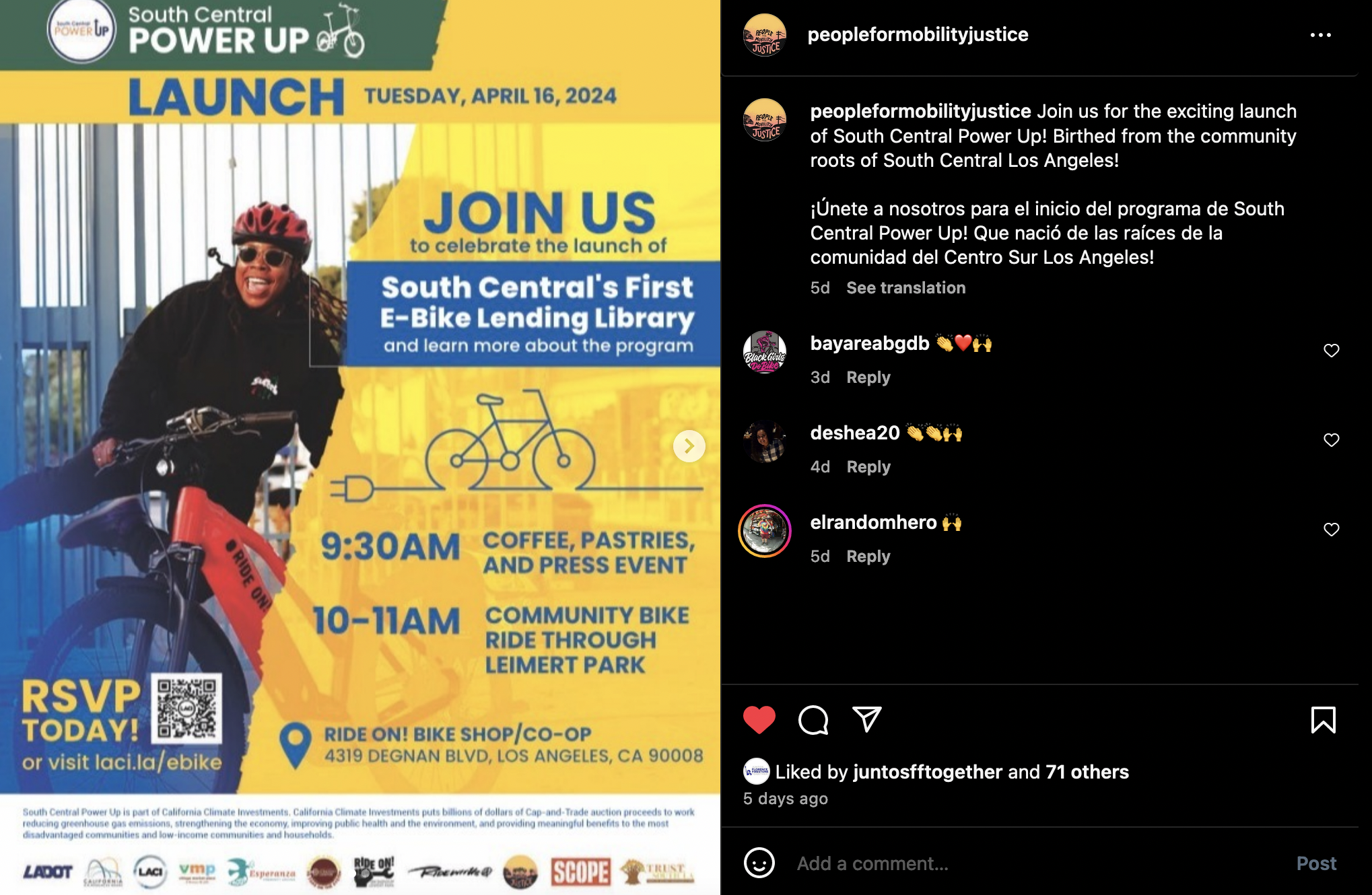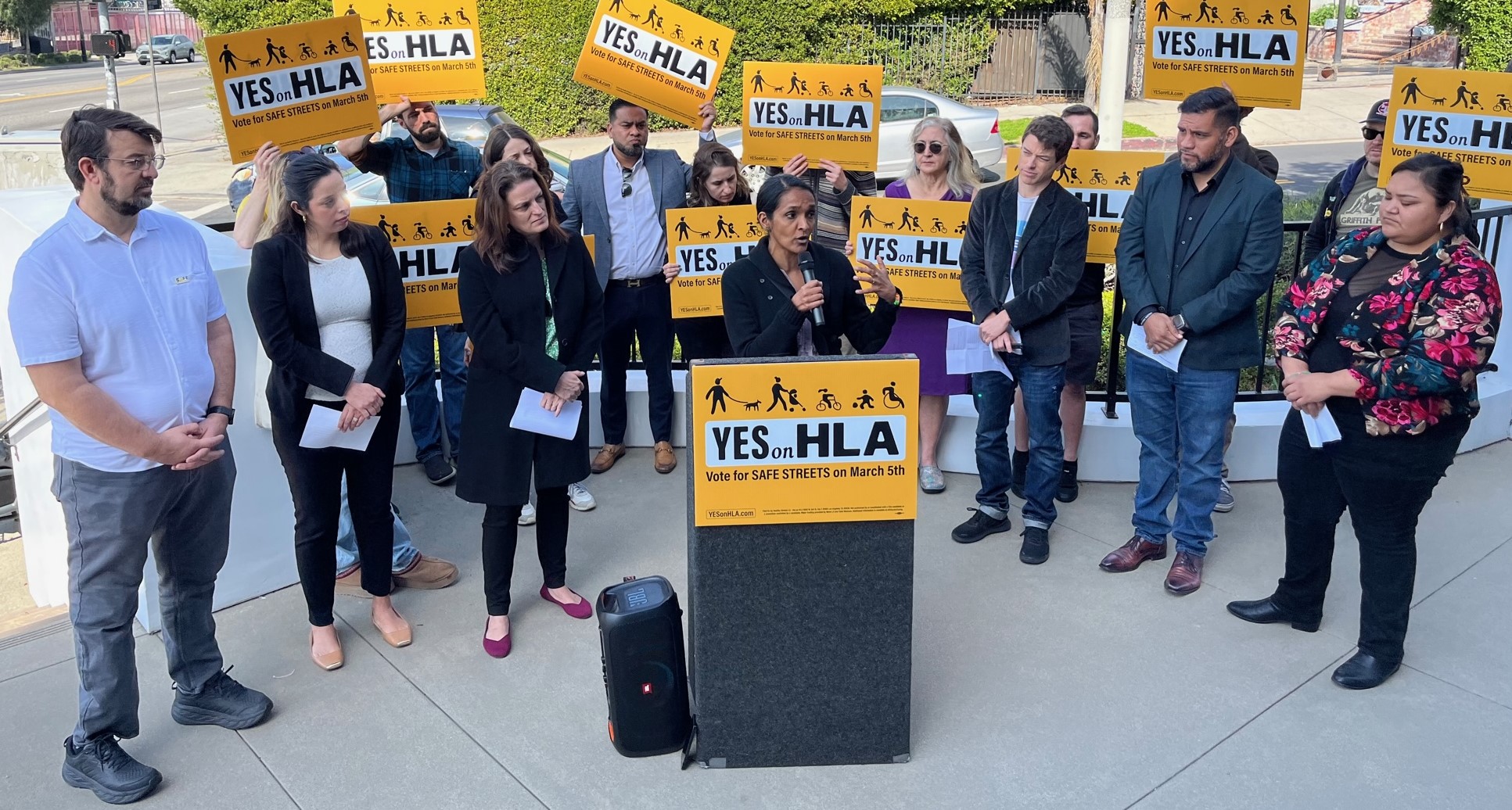Report from ULI Conference: The Future of Los Angeles Is Transit and TOD
6:47 AM PDT on June 7, 2010
 A view from the W Hotel. Photo: Gloria Ohland
A view from the W Hotel. Photo: Gloria OhlandRobust Attendance at ULI Event Indicates Developers, Investors and Feds On Board
The Urban Land Institute held a well-attended TOD Summit (as in transit-oriented development, or TOD) in Hollywood on Friday that signifies the quiet revolution going on in the world of transportation and development in Los Angeles. First, US Senator Barbara Boxer keynoted the lunch, announcing that the US DOT would admit both Phase 1 and 2 of the "subway to the sea" into the preliminary engineering process and conduct environmental review of both phases simultaneously - jumpstarting the subway project and greatly improving chances it will win federal New Starts funding.
Second, ULI released a positive analysis of the economic impacts of SB 375, the legislation requiring Californians to cutback greenhouse gas emissions to 1990 levels by 2020 through transportation and land use strategies, and to reduce emissions another 80 percent by 2050. This has become a politically volatile issue, and the oil companies are funding a campaign to get a measure to repeal AB 32, the landmark companion legislation that established the GHG reduction targets, on the ballot this fall.
Boxer also announced Congress would be including a strategy to fund LA's "30-10" plan to build all 12 rail and bus rapid transit projects funded by Measure R in 10 years in the upcoming reauthorization of the federal transportation bill. While there are a number of loan and bond programs that allow the federal government to provide funding for single transportation projects, there is no mechanism for funding an entire program of projects such as Mayor Villaraigosa has proposed with 30-10.
Both the 30-10 plan and SB 375 push the city and LA County toward a more compact and sustainable urban form focused around a rail system and non-motorized transportation. And the robust attendance at the conference indicated the degree to which developers and investors as well as the Obama Administration are interested in promoting transit, infill, mixed-use, TOD, and complete streets programs.
HUD's Shelley Poticha, senior advisor for HUD's new $500 million Sustainable Communities program and the morning keynote speaker, spoke about how HUD, the US DOT and the US EPA are all integrating their funding programs to promote sustainability and livability. Among the initiatives that HUD is considering, she said, is a new definition of housing affordability that will consider not just the cost of housing but also the cost of transportation, and that will reward those housing projects that reduce a household's transportation costs by providing good transit access and the option of walking and biking.
Throughout the day speakers talked about TOD projects in Los Angeles, about how to work with neighborhoods to build support for these projects, and how to find more funding for transit operations. There were afternoon tours of several projects, including the new Hollywood and Vine apartment, condo and W Hotel project, which features business conference rooms for residents as well as a hundred balconies and rooftop terraces with firepits, swimming pools and bars providing dramatic views of the Hollywood Hills, city and ocean. And there's a new Trader Joe's.
The panel of developers, mayors and others who spoke about the SB 375 analysis said that the Sustainable Community Strategy, or SCS, that is required under SB 375 will provide the certainty that both developers and investors need in order to build more mixed-use loft, live-work, and TOD projects near transit. The Southern California Association of Governments (SCAG) has begun working with its 189 member cities to develop an SCS by 2012.
Many of SCAG's member cities, including Fullerton and Ontario, have already begun dramatic upzoning around transit stations, and SCAG is tripling the funding in its Compass Blueprint Demonstration Program to provide for initiatives supporting mixed use, infill, TOD, walking and biking. Recent SCAG analyses for SB 375 show that cities across the region have been updating their general plans to reflect the planning priorities of SB 375.
For example, SCAG models show that more than half of all new development by 2020 will be built near transit stations across the region, and that the only new road capacity that is planned - with the exception of the 710 tunnel through South Pasadena and the proposed High Desert Corridor from SR 14 to the 1-15 - will be either HOV or HOT (high occupancy toll) lanes.
"SB 375 tells developers where they should be building - near transit stations, not in the greenfields," said Renata Simril, senior vice president of infill and mixed-use development for the national builder Forest City. "Time is money for developers and investors, and if we have the certainty that we are supposed to build near transit stations, then that is where we'll build."
Stay in touch
Sign up for our free newsletter
More from Streetsblog Los Angeles
This Week In Livable Streets
CicLAvia returns to Venice Boulevard, Metro board committees, L.A. City Council Transportation Committee, Metro budget theater, and more
Measure HLA Is Now Officially Law for L.A. City
Check the city maps to find what bus, bike, and walk improvements are coming to streets in your neighborhood




